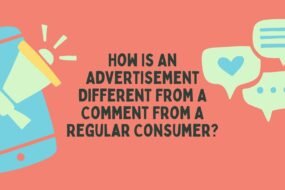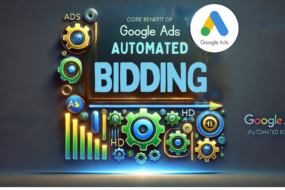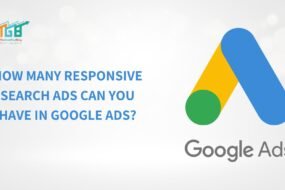
Let’s begin this with a real-life example, i.e.
When you go to a grocery store, the shopkeeper displays all its items at the entrance and on shelves. This type of marketing aims to grab your attention toward those products as soon as you enter (Push Marketing).
On the other hand, you actively search for specific items in the aisles of grocery stores. The shopkeeper might have placed certain items strategically or advertised them to attract customers (Pull Marketing).
These marketing forms are used for different purposes depending on what kind of product you want to sell.
So, in this blog post, we will dive deeper into what Push vs. Pull Marketing is, the differences between them, and which is more effective. We will also provide some examples of push and pull marketing to help you understand the concept better.
Let’s dive in.
What Is Push Marketing?
Push marketing is a form of direct marketing that focuses on getting potential customers’ attention to buy your product or service by pushing it in front of them.
It typically involves sending promotional messages, such as emails, text messages, and push notifications, directly to the customer’s device. It aims to increase brand visibility and generate immediate sales through direct advertising and promotional tactics.
They often rely on mass marketing tactics and interruptive advertising methods to capture the attention of a broad audience.
Examples Of Push Marketing Strategies
Push marketing strategy involves promoting products or services to a target audience through various marketing channels, such as television commercials, direct mail campaigns, and cold calling, to create immediate awareness and generate sales.
Here are a few examples of push marketing strategies:
Advertising
As we said at the beginning, developing advertisements that appear on TV, radio, print ads, and digital platforms can be beneficial to reach a wider audience. Furthermore, you can create display ads on social media sites such as Instagram to share with your followers.
- Television and Radio Ads: making and releasing radio and television commercials to advertise your products or services to a large audience. This strategy exposes your brand to viewers or listeners who might not specifically look for your products.
- Print Advertising: Placing advertisements in newspapers, magazines, brochures, flyers, and direct mail campaigns. This allows you to target specific demographics or geographic areas and deliver your message directly to potential customers.
- Display Advertising: Placing online banner ads or pop-up ads on websites and mobile apps to generate brand visibility and drive traffic to your website or landing page. These ads are displayed to users who may have not actively searched for your products or services.
Email Marketing
You can inform your contacts about new products, services, or incentives by emailing subscribers emails with tailored content and offers.
To do this successfully requires building up a list of potential customers and finding their email addresses so that they can be contacted directly.
This method helps to reduce the cost of marketing while at the same time ensuring more targeted messaging is delivered straight into the inboxes of people who are likely to respond positively.
Promotion & Events
Hosting webinars, seminars, and workshops will provide a great marketing platform to engage potential customers while spreading the word about your brand.
This is an effective way to reach a larger audience in an engaging environment. Contests can boost engagement, incentivizing people to interact with your product or service. Although it may take time and money, you’ll undoubtedly be rewarded for such efforts!
What Is Pull Marketing?
On the other hand, Pull marketing refers to tactics that draw consumers towards a product or service instead of pushing it out directly. It’s about creating content that resonates with customers and makes them interested in buying a product or service.
Pull marketing, also known as inbound marketing, is a marketing strategy that aims to attract and engage potential customers by providing valuable content and experiences; you can create a loyal customer base and drive long-term business growth.
Examples Of Pull Marketing Strategy
Content Marketing
Creating helpful, informative, and entertaining content for your target audience is one way to pull them in. You can create blog posts, videos, podcasts, or social media posts relevant to their interests and needs to increase engagement with your brand.
Remember to ensure your content is helpful and informative for your target audience.
More Reads – How To Become A Content Creator: A Complete Guide In 2023
– Content Marketing For Small Business: 7 Key Steps To Success
Search Engine Optimization (SEO)
SEO involves optimizing your website for search engine rankings, which will help people find it when they enter specific keywords into the search bar.
Optimizing your web pages and other marketing materials with the terms your target audience is actively searching for will help you organically appear in front of them. This natural approach to reaching out to potential buyers offers more brand awareness without feeling too pushy or intrusive.
Word-Of-Mouth Marketing
Word-of-mouth is a powerful form of marketing that involves customers spreading the word about your product or service to others via recommendations, conversations, reviews, and more. This can bring in more potential customers who already trust the brand through someone they know.
Now, let’s move on to understand which is more effective.
Push vs. Pull Marketing: Which Is More Effective?
Push and pull marketing can be effective, whatever the business goal or product you are trying to market. It depends on what kind of message you want to communicate to your target audience and the type of products or services being promoted.
For example, if your goal is to reach a wider audience quickly, push marketing might be more suitable as it involves proactive promotion. Meanwhile, if you want to build relationships and establish trust with customers, pull marketing is more effective as it involves creating content that resonates with your target audience.
Examples Of Push And Pull Marketing
Scene 1: You Are Developing A New Business
In this stage, you are entirely new. You need a reputation or foundation to build on. Consequently, you will probably engage in activities that have yet to expand rapidly, like acquiring your first customers personally.
The most common techniques for early-stage businesses include pushing marketing efforts like cold emails, events and conferences sponsorship, door-to-door sales pitches (Airbnb, Alibaba Group), and flyers distribution campaigns(Groupon).
Even though pull tactics might work in the long term, it takes time to gain a foothold in your industry by building an online presence with content that ranks high on Google searches.
Also, it would be best to consider running paid advertising campaigns like Google Ads and Facebook ads to drive traffic to your site and raise brand awareness.

Scene 2: Building Customers For The Long-Term
At this stage, you have already developed a base of customers but are looking to expand the reach further.
Here, using both push and pull tactics for growth is essential. Push marketing for introducing promotions and discounts or launching new products or services should be utilized to excite existing customers and create more brand awareness among potential buyers.
Pull tactics such as content marketing like blogging, webinars, and podcasts can also help build relationships with your customers by educating them on how to use your product/service better. Additionally, search engine optimization (SEO) will ensure that when people look up answers related to what you offer, they are directed toward your website through organic searches.
FAQs
Q1. Isn’t Push Marketing Intrusive?
A: Push marketing is sometimes intrusive. If done correctly and with consideration for the target audience’s interests and needs, push marketing can be an effective way of reaching potential customers or informing existing ones about new products and services.
Q2. Should I Use Both Push and Pull Marketing?
A: Yes, it is recommended to use both. You must always determine which will be more effective for your product or service.
Q3. Which One Works The Best?
A: Remember, this isn’t about which is better, but what works best for your business. Try using push and pull marketing in different scenarios to understand which is more effective in the long run.
Final Thoughts
Now that you understand push and pull marketing better, you must consider what message you are communicating to your target audience. Depending on your business.
If it helps you, if you still need to decide what type of marketing to use, we digital marketing experts can. If there are any questions or concerns regarding the material discussed here, do not hesitate to reach out in the comments! We are more than happy to help answer them.
Thanks for reading 🙂
Also, read – Nostalgia Marketing: Include Everything You Need To Know–
A Complete Guide To Marketing Flywheel For Beginners








No Comments